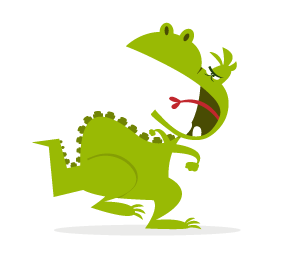When it comes to web design too often perfect, colorful and boxy designs make the cut; however, the reality is different as it is hard to find objects with a perfect shape and a perfect color in our daily routine. To achieve a unique and communicative design we need to consider more creative approaches. For instance, we can draw sites by ourselves — or at least some parts of it.
The main purpose of hand-drawn elements lies in their ability to convey a personality and an individual note in times when perfect, boxy and rounded elements can be found almost everywhere. They look different and they can make a web-site look different. And this is what we usually are after in the first place.
And in fact, this is done quite often: whether a blog, a shop, an ad, a private page, or some collaborative project — doesn’t matter whether with Flash or (X)HTML. This post presents fresh examples of hand-drawing style in modern web design. All screenshots can be clicked and lead to the sites from which they’ve been taken.
Please also have a look at our previous showcase
What's new?
Few months ago we've declared that, in our humble opinion, shiny and glossy design elements were officially outdated. We have also suggested that web designs will become more subtle, more user-centric, more content-oriented and less loud. Indeed, this is exactly what we observe at the moment. Hand-writing, earlier often taken to extreme, now seems to become subtle, supporting and less dominating. Below you'll find some examples which are supposed to prove exactly that.
Hand-drawn elements are used moderately
In particular, since designers try to provide visitors with a comforting, user-friendly presentations, they tend to use hand-drawn and hand-written elements moderately. Sometimes, only few design elements are designed accordingly while the rest of the design is focuses on clean conten presentation and isn’t drawn at all. For instance, often only category headers, search boxes or navigation are hand-written.
However, it is important to understand that there are still many examples of exaggerated use of hand-writing and hand-drawn elements (see examples below). Yet we’ve observed a growing number of designs where such elements are used sparsely and accurately.

Jeff Sarmiento combines hand-written and hand-drawn elements with a classic retro-look. Although there are only few elements which are actually hand-drawn, they give the design an authentic style which perfectly fits to its look. More precisely, hand-drawing is used only for category headers,
Script fonts gain on popularity
Since hand-drawn elements become more subtle, designers often tend to imitate hand-writing instead of using it. For instance, this is done by using clean and sharp script fonts instead of literally hand-written or drawn sketches. This approach helps designers to make the layout cleaner and easier to scan.

Paul Wallas uses script fonts in header and for category headings. The script font is, however, easy to read and perfectly fits to the informal style of the site.
Beware: usability issues!
Regarding the usability point of view we’ve managed to find some negative examples. Attempting to create a distinctive design, designers often tend to neglect usability issues. Whether some design element is hand-drawn or not, it is important that it successfully communicates its function and visitors are able to a) find it and b) immediately know how to use it.

Hand-written navigation options. That may be too much hand-writing at once.
Mind Never (screenshot above) uses hand-writing for 6 design elements — logo, tagline, navigation, headers, illustration and all clickable elements. The main problem with the design is the simple fact that it is hard to scan.


Furthermore, links are styled differently — sometimes they are blue, sometimes black, sometimes they have a hover-effect, sometimes they don’t. That’s not effective and not user-friendly. Here one should reduce the number of hand-drawn elements and use standard design elements instead.

Consider another example above. Omnia.ae uses hand-drawn design elements for almost every possible element in the layout. The image displays a country selector which is a radio-button. Although this is definitely an interesting solution, this selection is easy to overlook as it appears to be rather a part of the background image than a standalone design element.


While the RSS-button and a sign-up-illustration are likely to be perceived as clickable design elements, in the language selection above it is not the case. Keep in mind: if your decision to use an artistic element instead of a standard solution raises some usability issues, you should prefer a standard solution.
Let's now take a look at some examples of how hand-writing and hand-drawing are used in practice.
1. Hand-drawing in logos and headers
When hand-written elements are placed in logo or in a header, the designer makes sure that visitors will detect these elements. Since these areas are clicked more often than other layout elements, the “hand-drawn”-feeling will be conveyed. That’s what some designers are trying to achieve. Besides, if the designer wants its design to convey a personal note and some design elements are already hand-written, it makes sense to consider adding some hand-written notes to the header as well.
Logos



Headers



2. Single hand-drawn design elements
To give the layout a “hand-written”-style design elements need to be styled accordingly. In fact, you can apply the style to any part of your layout. Usually designers use hand-writing for teasers, RSS-buttons, navigation, input fields, headers and background images.
Teaser, Slogan


RSS-feeds


Input fields

Newsletter Box

Search box
Illustration


Preloaders


Header






Background image



3. Hand-drawing in navigation
Navigation is the primary element of every site design. Designers know it and give it some unique artistic elements to make the design more unique and distinctive. However, you shouldn’t experiment too much with navigation. Make sure it works. The function is more important than the design. Below you’ll find some example of how one can effectively combine the hand-drawing-style with clear and intuitive navigation.

Hand-drawn rectangles for navigation options

Hand-drawing combined with hand-writing

Hand-drawn icons appear when the navigation option is hovered

Hand-drawn icons are used to indicate navigation options

Hand-drawn icons appear when a section is hovered

A script font in use

Subtle hand-writing used for tabs

Tiny hand-writing for section headers and script font used to display navigation options
4. Hand-drawing used moderately.
As we have written above, designers attempt to make sure that the design looks distinctive without compromising the usability and user-friendliness of the design. In fact, it’s not that hard as it may look like. Consider the examples below.



This is how we like it: huge typography, flashy colors, memorable favicon and a sweet roboter willing to help. Well, the roboter speaks hand-writing, of course.

The design become more interesting when standard-elements are mixed with some hand-written elements. In such cases visitors are offered the design which looks unusual and different. That’figure a good way to impress visitors with an unusual design approach. That’s what Li Chin does. The navigation menu has hover-effects as well.

Icons, navigation and products in an online-shop

Coldplay offers some free downloads

Flash-based


Beware: Flash-based music player starts automatically




This is a pretty hand-drawn sidebar!





Graphic artists and illustrators seem to have no problems with drawing a web-site from scratch. This is how Sarah Rays has done it.

Grégory Dourdes with the same approach.
5. Hand-drawing used heavily
There are still many examples of exaggerated use of hand-writing and hand-drawn elements, however they seem to lose on popularity. It’s hard to say if it’s a trend or not — a simple explanation we can come up with is a fact that overcrowded, “too artistic” designs are likely to attract a limited target group while design with moderate use of hand-drawing can be aimed at everybody.

Flash in use

Probably the largest hand-drawn design out there


Hand-drawn site layout


Creative chaos at its best











